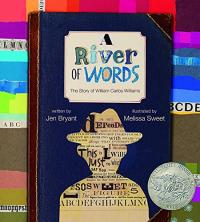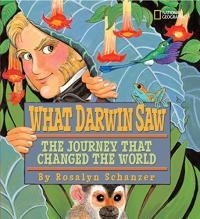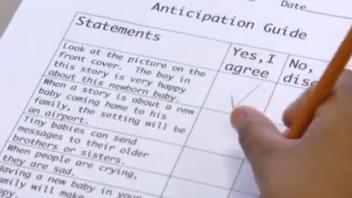What is an anticipation guide?
This comprehension strategy activates students’ prior knowledge, builds curiosity about a new topic before learning about it, and then checks for understanding after reading.
Before reading a selection, students respond to several statements that challenge or support their preconceived ideas about key concepts in the text. This helps to stimulate students’ interest in a topic and sets a purpose for reading. Anticipation guides should be revisited after reading to evaluate how well students understood the material, correct any misconceptions, and discuss new ideas and connections students made.
Why use anticipation guides?
- Anticipation guides stimulate students’ interest in a topic and set a purpose for reading.
- They teach students to make predictions, anticipate the text, and verify their predictions.
- They connect new information to prior knowledge and build curiosity about a new topic.
Key Information
Focus
When To Use This Strategy
Appropriate Group Size
How to use an anticipation guide
Construct the anticipation guide
Construction of the anticipation guide should be as simple as possible for younger students. Write four to six statements about key ideas in the text; some true and some false. Include columns following each statement, which can be left blank or can be labeled Yes, or No (Maybe can also be used). Create an additional column for revisiting the guide after the material has been read.
Model the process
Introduce the text or reading material and share the guide with the students. Model the process of responding to the statements and marking the columns.
- Read each of the statements and ask the students if they agree or disagree with it.
- Provide the opportunity for discussion and encourage students to explain their reasoning or justifications. The emphasis is not on right answers but to share what they know and to make predictions.
- Read the text aloud or have students read the selection individually. If reading aloud, teachers should read slowly and stop at places in the text that correspond to each of the statements.
- Bring closure to the reading by revisiting each of the statements.
Watch a lesson (whole class, grade 2)
Go inside Cathy Doyle’s second grade classroom in Evanston, Illinois to observe how Cathy uses the anticipation guide strategy to pique her students’ interest in the book they are about to read together, Jin Woo by Eve Bunting. Cathy asks questions designed to activate the kids’ prior knowledge and to encourage them to make predictions about what they think will happen in the story.
Watch a teacher demonstration (science, whole class)
Listen to Adrienne Kizer, a middle school science teacher, explain how she uses an anticipation guide to introduce vocabulary and activate prior knowledge. (Education Service Center Region 13)
Collect resources
Download blank templates
Examples
Learn how anticipation guides can be used for children’s books such as the picture book Miss Rumphius. See example ›
The 12 pre-reading strategies in this printable offer engaging ways to tap students’ prior knowledge and spark curiosity about stories and text you will introduce in your reading block. (From our sister project, Reading Universe) 12 Ways to Activate Background Knowledge
Differentiate instruction
For second language learners, students of varying reading skill, and younger learners
- Anticipation guides can be completed orally.
- The number of statements can be modified to suit learner’s needs.
- Teachers may assign different reading passages about the same topic based upon reading skills.
- Color code columns so that the child can clearly tell the difference between the “before” and “after” column.
- Use simple sentences so that the student focuses on the content, rather than understanding the sentence. Example: “Ringworm and athlete’s foot are caused by fungi” to “Fungi causes ringworm and athlete’s foot.”
Use across the content areas
Science
- Use anticipation guides to help students understand about fungi. See example ›
- Use anticipation guides to help students understand about dinosaurs. See example ›
Social Studies
- Use anticipation guides to help students organize their reading about topics such as the Panama Canal. See example ›
See the research that supports this strategy
Duffelmeyer, F. (1994). Effective Anticipation Guide statements for learning from expository prose. Journal of Reading, 37, 452-455.
National Institute for Literacy. (2001). Put Reading First: The Research Building Blocks for Teaching Children to Read Kindergarten Through Grade 3. Jessup, MD: ED Pubs.
Head, M. H., and Readence, J. E. (1992). Anticipation guides: Using prediction to promote learning from text. In E.K. Dishner, T. W. Bean, J. E. Readence and D. W. Moore (Eds), Reading in the content areas: Improving classroom instruction (3rd ed., pp. 227-233). Dubugue: Kendall/Hunt.
Wood, K. D., D. Lapp, J. Flood, and D. B. Taylor. 2008. Guiding Readers Through Text: Strategy Guides for New Times. 2nd ed. Newark, DE: International Reading Association.
Wood, K.D., & Mateja, J. A. (1983). Adapting secondary level strategies for use in elementary classrooms. The Reading Teacher, 36, 492-496
Children’s books to use with this strategy

River of Words

Barack

